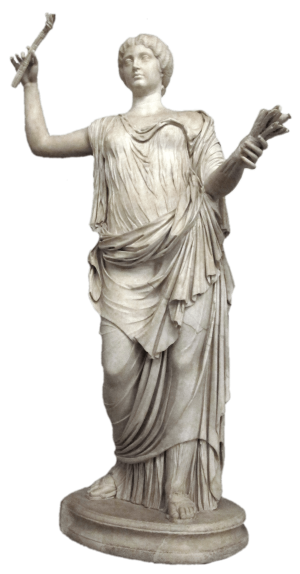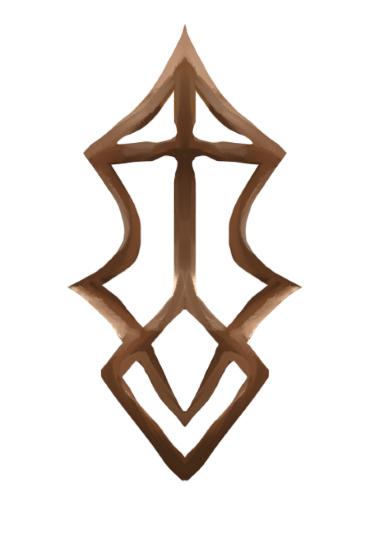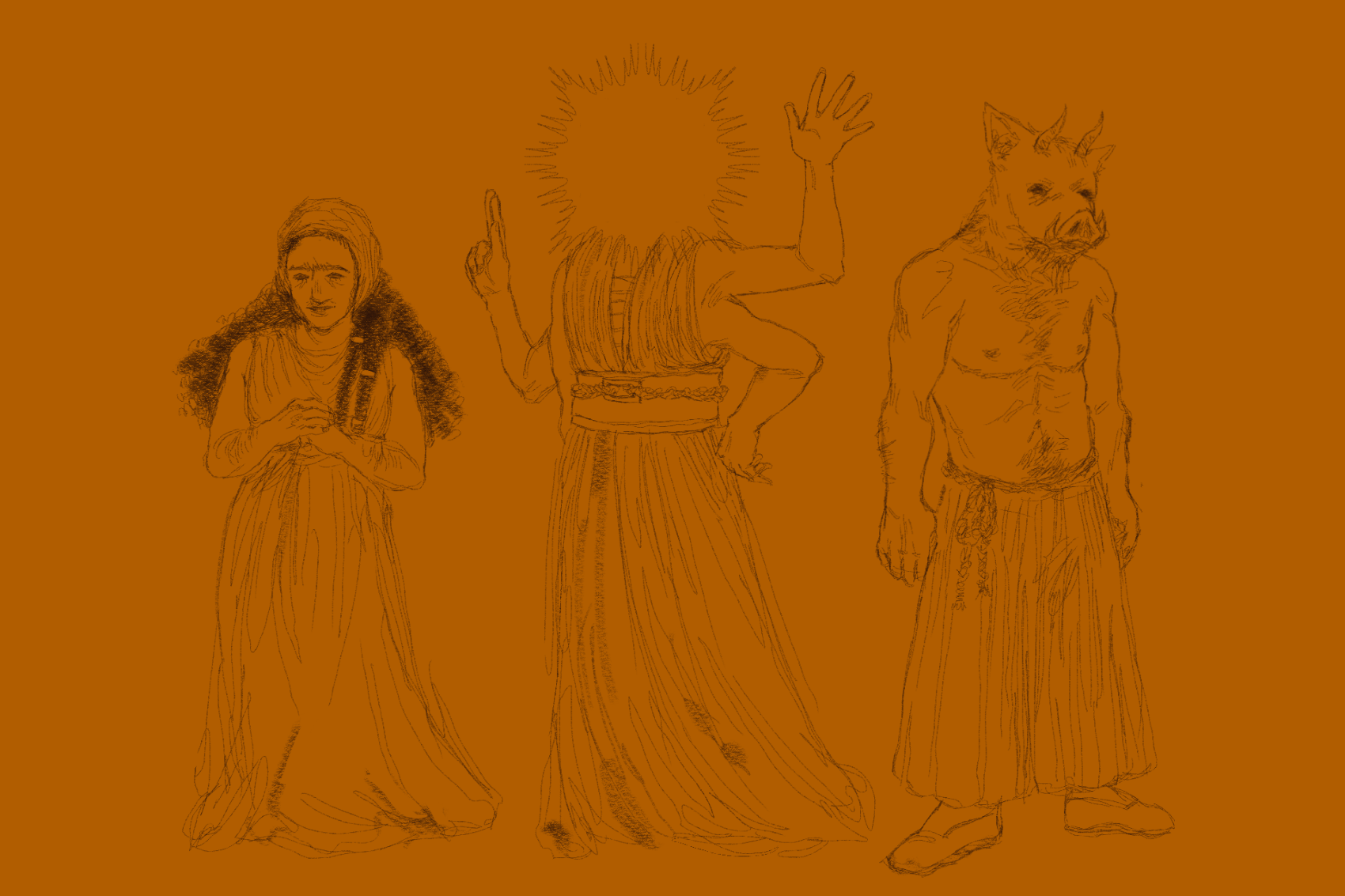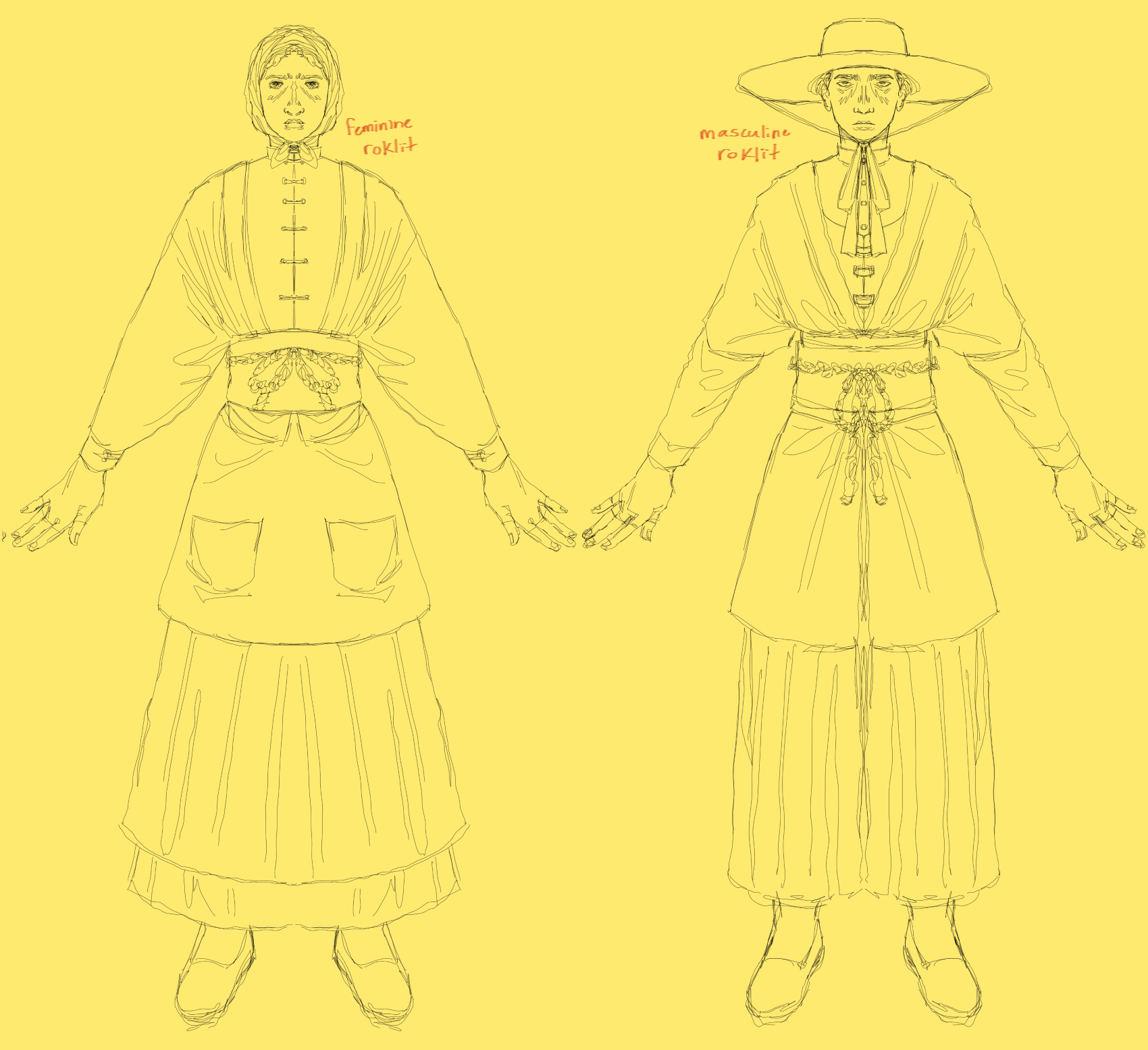


OVERVIEW
Anaism is an ethnic religion, meaning that-- unless an Anai refers you to a person with high power in the religion (or, of course, you were born into it)-- you cannot simply begin practicing it. It focuses on devotion to gods known as the Balladen, divine beings known as Šlovich Weachtern-- and their creations, Fialeh. Founded by a man named Fidachus the Prophet in approximately 444 CE in Rugiland, it is one of the oldest religions with beginnings in Europe.

The Balladen. (Left to right: Nour, Kataž, and Uuad.)
HOLIDAYS
Fallaej Šver: Celebrated every winter solstice to honor Nour, the new year ahead, and fertility. In modern day, an intricate figure-skating performance is broadcast internationally from Sihlmegozok in the morning; after sunset, a religious ballet is performed in Hoje Aleksandria's grand theater. In homes, a circle of candles is placed around evergreen and/or any regional healing plant, and a prayer takes place after sunsrise to ensure good health and fortune. The oldest woman of the family will be gifted an ornate woven head scarf called an ekkert.
Henn Goj: Celebrated every summer solstice to honor Kataž and the harvest. A large feast of dishes made from cereal crops, ripe fruit, and goat's meat is held at high noon. One prayer takes place before, as well as one after. Any leftover food scraps are scattered outside for 'nature to reclaim'. A card game called Jolík (literally 'Joker') is played as a common pasttime, and only mead and wtaer may be dranken to preserve one's sanctity.
Tay der Fuli: The month of May, which honors Uuad, fate, and mortality. On the 1st, 8th, 15th, 22nd, and 29th of the month, offerings to Uuad are placed at shrines (ranging from seashells to hard liquor). On the 15th, too, will Anais over the age of five prick their finger, letting the blood drip into a small, holy container of water called a gläšte. On the final day of May, Anais will gather in large groups-- regardless of weather-- to join hands, praying and dancing around a maypole.
TERMS OF NOTE
Balladen: The three supreme gods who created and rule over all matter, elements, and living things to ever exist.
Šlovich Weachtern: Deities created by the Balladen with dominion over various specific aspects of nature to guard humanity and keep mankind in check.
Fialeh: Humans granted rule over various individual concepts, objects, and/or elements by their respective Šlovich Weachtern.
Steigen: Spirits inhabiting the aether who act as messengers between realms under the control of Kataž.
✦✦✦
Paadst: Anais with the ability to directly communicate with supernatural beings. In Nebärav, a group of paadst form a government body similar to parliament.
Kanaern: Anais who lead worship in a kastel. They may consecrate buildings, grounds, objects, and people.
Štachen: Anais (typically female) who work in kastellem or close-knit communities to guide, nurse, and educate.
Der Dricht: The Anai holy book. It's gospel takes the form of an epic poem, similar to Ovid's 'Metamorphoses'.
Kastel: Anai place of worship.
MISCELLANEOUS
A link to a diagram containing information on the Balladen and Šlovich Weachtern.
✦✦✦
Often, Anai dress is very ornate and handmade. It takes great inspiration from tradional and historical garments worn across Europe.

